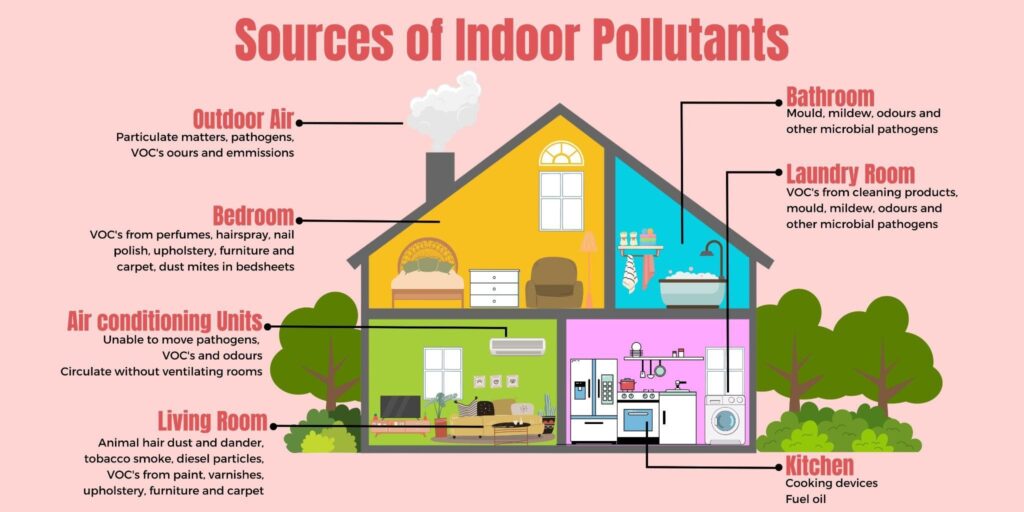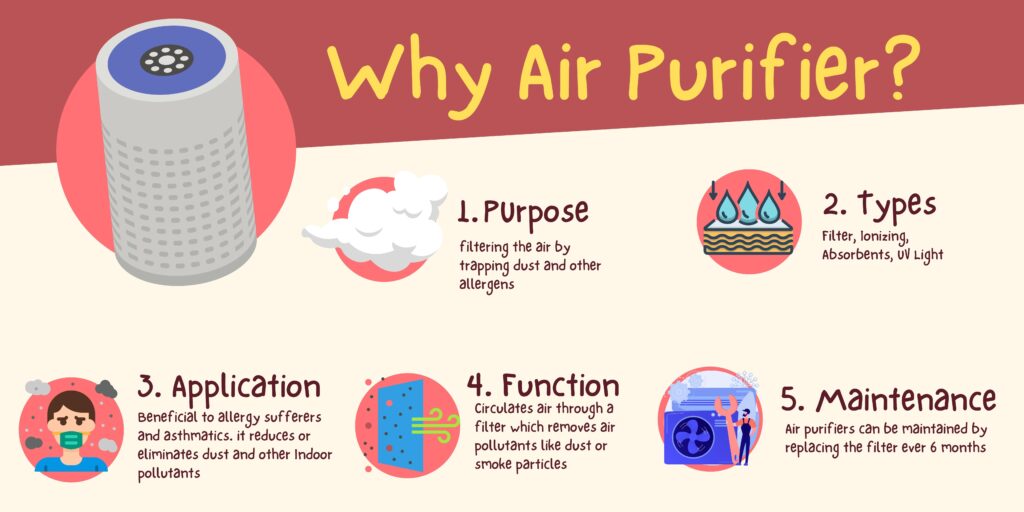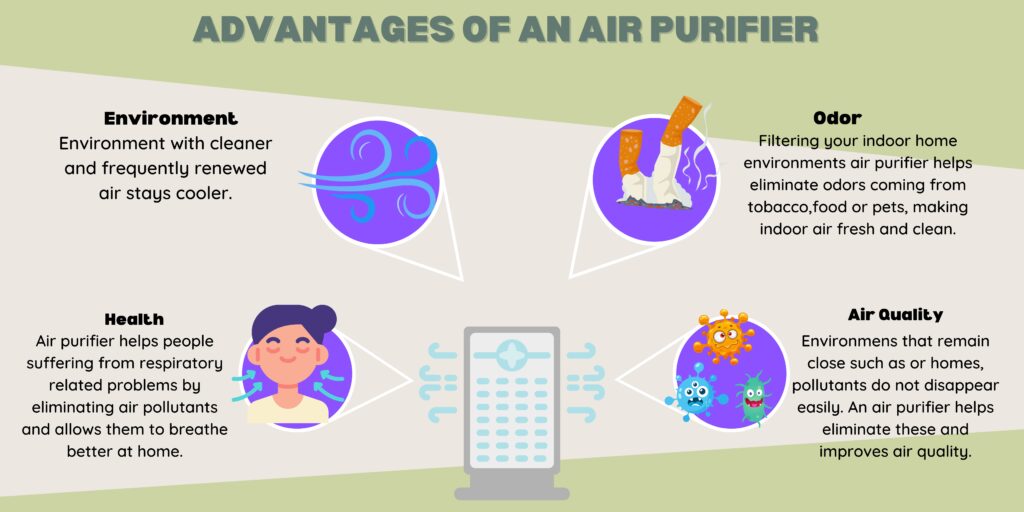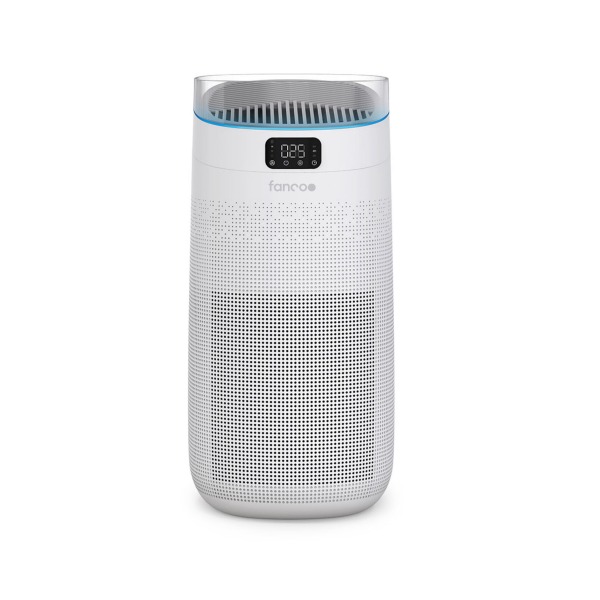Understanding Air Purifiers
Understanding Air Purifiers
Creating a safe and healthy living environment for you and your family has never been more important. The danger of living with air pollutants and airborne viruses has become prevalent in our lives, and so Air Purifiers have become a popular addition to many households in response to this.
In this blog post, we will delve deeper into the importance of air purifiers and how they can help you and your family breathe easy.
Indoor Air Pollution: The Silent Offender
Studies show that people spend about 87% of their day surrounded by indoor pollutants. While our homes are often thought of as one of the safest places to be, away from outdoor pollutants like vehicle emissions, fossil fuels, and viruses, in reality, our homes may not be that safe! According to the Environmental Protection Agency, indoor air pollution can often be found 2–5 times higher than outdoor environments and can quickly spiral to become up to 100 times worse than outdoor pollution levels!
More time spent indoors means more time exposed to harmful pollutants and particles including:
- Mould spores from surfaces with sufficient moisture (roof leaks, bathroom, kitchen, laundry)
- Allergens (dust mites, pollen, cigarette smoke, dead skin)
- Ultra-fine dust (debris, AC units, fabric fibres. hair, carpet)
- Pet dander
These contaminants are invisible to the naked eye, making it easy to go about our days and weeks unaware that we are spending most of our time in an environment that may not be the healthiest setting to be working and living in. Breathing these pollutants in can be damaging to our lungs, aggravate pre-existing conditions such as asthma, and affect our overall health.

Why Air Purifiers?
Improving the air quality indoors can be achieved by simply circulating out the stale polluted indoor air with fresh clean outdoor air. Creating this cycle is not often practical due to outdoor air pollutants such as pollen and dust – and when the weather is colder it’s not very comfortable to keep a window open and let the cold air into your house.
This is where Air Purifiers come in. Most air purifiers work by drawing in the air from a room or indoor space, funneling it through a series of filters that catch and trap pollutants before the clean and filtered air is exhausted back out into the room. This process is common across different models available in the market, so the types of filters an air purifier uses, its area coverage capacity, and smart Wi-Fi control features are things to look out for when looking for a model that best suits your needs.
If you’re in the market for an air purifier, it’s important to consider the types of filters that are available. Most models use a combination of filters to purify the air, and here are the most commonly used filters and their characteristics.

Common Filters
When looking at the different Filters used in Air Purifiers, you will find that most models will use a combination of filters to purify the air – here’s a simple breakdown of the most commonly used Filters and their characteristics.
- Pre-Filter
- Often seen as the front lines of Air Purifiers, the pre-filter is the first layer of defence that intercepts the larger particles in the air such as hair, debris, and pet dander. The pre-filter prevents these larger particles from entering other filters such as HEPA filters; extending their lifespan and increasing the other filters’ effectiveness
- HEPA Filter
- HEPA (High-Efficiency Particulate Air) is one of the most popular and commonly used filters across Air Purifier models as HEPA filters are required to meet a strict set of requirements of filtering out at least 99.97% of particles bigger than 0.3 microns. Our eyes can only see specks larger than 10 microns – so HEPA filters are great at catching tiny pollutants such as bacteria, dust, mould & pollen. HEPA filters are disposable and replaceable and are great for allergy and asthma sufferers. Whilst some odours and chemicals can be caught by HEPA filters, most are best captured by specialised Carbon filters.
- Activated Carbon Filter
- Carbon filters are excellent at reducing the contamination of air such as smoke, gases, and chemicals. Activated Carbon filters in contrast to HEPA filters have a lower effectiveness at removing airborne particles so it is ideal to have both filters used together to capture what the other one cannot.
- Ultraviolet Light
- Typically used in the final section of filtration due to particles shading germs from the UV rays, UV purifiers work by pushing air through a UV ray which destroys or neutralises many bacteria, germs, and viruses by turning them into water and carbon dioxide.
Here are some more points to consider

- Improved Air Quality: Air purifiers have been proven to enhance air quality in indoor environments. With pollutants and particles circulating in the air, air purifiers work to filter out these harmful contaminants, leaving the air cleaner and fresher.
- Better Health: Breathing in polluted air can have negative effects on your health, especially if you suffer from allergies or asthma. Air purifiers can help alleviate symptoms associated with these conditions and provide a healthier environment for you and your family.
- Versatile: Air purifiers come in various shapes and sizes, making them versatile and suitable for a range of spaces. Whether you need an air purifier for a large living room or a small bedroom, there is a model that can cater to your specific needs.
- Affordable: While some air purifiers may be expensive, there are plenty of affordable options available on the market. Investing in an air purifier can be a cost-effective way to improve the air quality in your home and safeguard the health of your loved ones.
- Energy-Efficient: Many air purifiers are designed to be energy-efficient, which means they won’t add to your energy bills. Some models also have eco-friendly features, making them a great choice for environmentally conscious consumers.
Our Recommendation
Fanco Bright Smart Air Purifier

For households looking to improve their indoor air quality with larger rooms and open living spaces, we recommend taking a look at the Fanco Bright Smart Air Purifier.
Suited for areas up 50m2 and with a clear air delivery rating of 400m3/hr, the Bright Purifier would complement any living and entertainment space perfectly. It utilises a combination of a Pre Filter, HEPA 13 filter and Activated Carbon filter to deliver clean and healthy purified air and is simply controlled via the digital display on the model or through your compatible smart device such as a tablet or smartphone!
Fanco Fusion Air Purifier

For smaller spaces like a study, the Fanco Fusion Purifier is a brilliant choice. Rated for spaces up to 16m2 and with an air delivery rate of 90m3/hr, the Fusion is the perfect portable solution to breathing easier and healthier. Especially the silent operation makes the Fusion a great addition to bedrooms – quietly purifying the air in the background through its HEPA 13 rated filter. The Fusion is controlled through an interface on from the controls on the top of the unit and notably can also double as a standard desk fan – just open the top half of the unit and enjoy a nice gentle breeze on those hot summer nights!
Air Purifiers are very easy and practical addition to households that are looking to improve their indoor air quality. Being easy to use and effective, with very little maintenance requirements and simple to setup, Air Purifiers are super helpful devices in today’s climate; providing users with a healthier and cleaner living environment.
Check out the full range of Air Purifiers.

